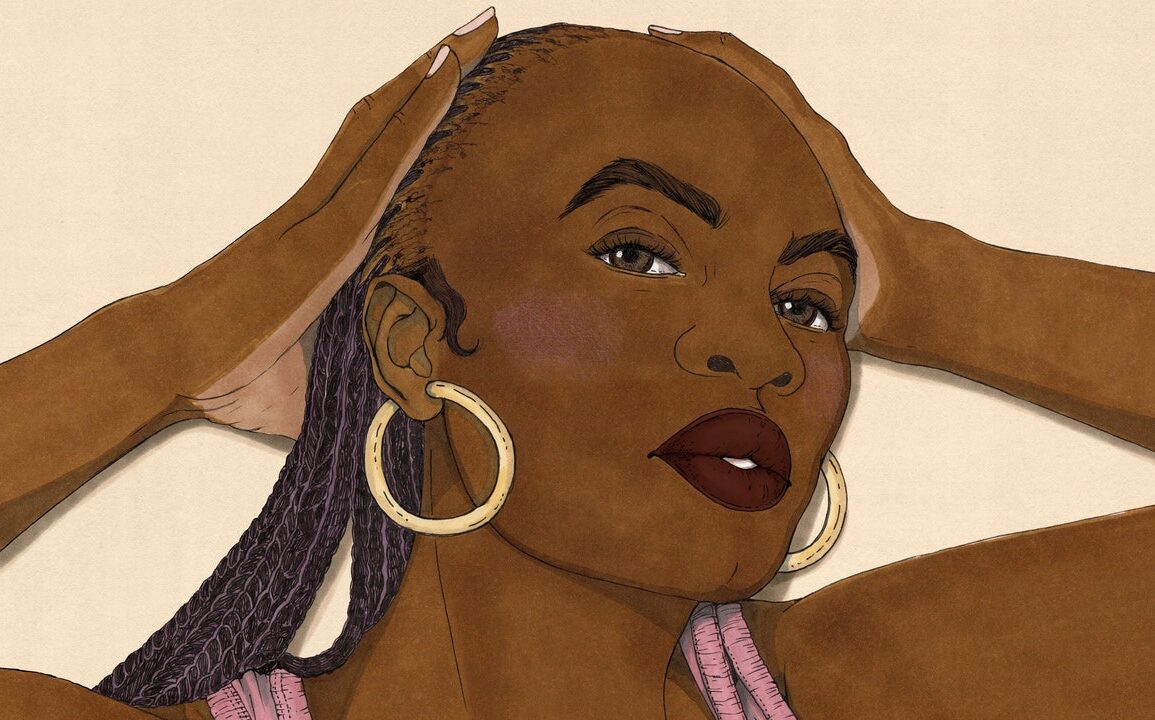
The condition typically starts at the hairline, but in certain cases can begin on other parts of the head, like the back or the sides as it did for Okeke. “It’s a process that usually takes years,” Dr. Day said. For Okeke, it took about four years before she began noticing the patches at the top of her hair in 2020. “I thought it wasn’t a big deal at the time and that it would grow back,” she says—a thought many Black women have mistakenly believed.
When Ashley Parker first noticed her edges becoming thin, she thought nothing of it either—because she was instructed to. “I was getting my hair done at the salon and they had just relaxed it and my edges were coming out in chunks,” says Parker (who is using a pseudonym for this story). “I was so worried but the hairdresser was like, ‘Don’t worry. It’ll grow back.’” Just a few hours after getting the relaxer, Parker got box braids. The now 22-year-old architecture student had been getting braids since she was in boarding school in England, starting at aged 10. “It’s difficult to maintain your natural hair while you’re in boarding school so I would get my hair braided [in a style that lasted] for four weeks at a time,” says Parker. When she removed the braids a few weeks after the appointment where her hair was falling out, she realized her edges had gone from thin to nonexistent.
Traction alopecia can affect people of any ethnicity, but is most commonly seen in Black women. Up to a third of us will have the condition, according to a 2023 article published in the journal JAMA Dermatology. While there’s been a recent increase in information and awareness about TA among dermatologists and hairstylists, Black women dealing with the condition often do so in isolation with feelings of shame and helplessness that can’t be improved in a doctor’s office or with different hairstyles.
Thinning edges are not normal
The thought of it at its worst (large patches of hair falling out) is terrifying to most, but the beginnings of traction alopecia (thinning edges) are almost universally Black. Crystal Aguh, MD, a board-certified dermatologist in Baltimore, says she believes most people are familiar with the concept of traction alopecia, even if they don’t know the medical term for the condition.
If you often got braids while you were growing up, you were probably advised to “not get braids too tight” or “give your hair breaks” in between styles. But Dr. Aguh says that in terms of guaranteeing you won’t lose your hair, these tips are more or less old wives’ tales. “Hairstyles don’t have to be tight for you to develop traction alopecia,” says Dr. Aguh. The molecular science of hair follicles doesn’t abide by our human understanding of what feels like it might be “too tight.” Dr. Aguh explains that if you’ve begun to experience hair loss due to tension, then any hairstyle (including glue-on wigs, sew-ins, and locs) that perpetuates that tension over a prolonged period could lead to further hair loss. “Part of the struggle is calling them ‘protective’ styles,” says Dr. Aguh. “Let’s call them styles of convenience because that’s what they really are.” While Dr. Aguh confirms these styles may protect hair from the breakage that can come from constant manipulation, they can also introduce damage from tension on the scalp.
This post was originally published on this site be sure to check out more of their content.






